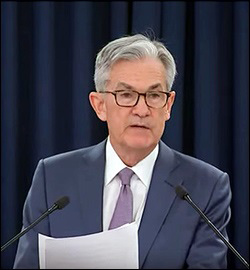Courtesy of Pam Martens
If you are an individual and you want to buy stocks on margin at a brokerage firm in the U.S., under Federal Reserve Board Regulation T the brokerage firm can lend you a maximum of 50 percent of the total initial purchase price. Not all stocks are eligible for margin. There are also maintenance margin requirements imposed by the industry, stock exchanges and the brokerage house itself if the stock value drops after the initial purchase, which could trigger a margin call and subject you to having to deposit more cash or securities under penalty of having your account liquidated at a loss.)
Regulation T grew out of the stock market crash of 1929 and ensuing economic collapse known as the Great Depression. The crash was correctly blamed on the lack of regulation of Wall Street firms which were allowing customers to borrow as much as 90 percent in their stock margin accounts. Following three years of stock market hearings before the Senate Banking Committee of that era, which revealed an unprecedented level of corruption and self-dealing on Wall Street, Congress enacted sweeping legislation. In addition to the Glass-Steagall Act (Banking Act of 1933) which banned Wall Street’s stock trading and underwriting houses from owning deposit-taking banks, the Securities Exchange Act of 1934 (15 U.S.C. 78) gave authority to the Federal Reserve Board to set margin policy and required the following at that time:
“For the purpose of preventing the excessive use of credit for the purchase or carrying of securities, the Board of Governors of the Federal Reserve System shall, prior to October 1, 1934, and from time to time thereafter, prescribe rules and regulations with respect to the amount of credit that may be initially extended and subsequently maintained on any security (other than an exempted security or a security futures product). For the initial extension of credit, such rules and regulations shall be based upon the following standard: An amount not greater than whichever is the higher of — (1) 55 per centum of the current market price of the security, or (2) 100 per centum of the lowest market price of the security during the preceding thirty-six calendar months, but not more than 75 per centum of the current market price.”
This would seem to make clear that there was Congressional intent to permanently prevent stock market bubbles that would crash and leave the U.S. economy in ruins as a result. Since 1974 the Fed has kept its Regulation T margin requirement at 50 percent.
Unfortunately, once Wall Street was allowed to become a major funder of political campaigns for members of Congress, the reins on Wall Street have been eliminated one by one. The Glass-Steagall Act was repealed in 1999, leading to the behemoth trading houses that exist today on Wall Street which also own the largest deposit-taking banks in the country. Because these deposit-taking banks are federally-insured and backstopped by the taxpayer, the Federal Reserve began during the last financial crisis in 2007 to 2010 to interpret its job to be bailing out both the insured banks and their uninsured stock trading houses.
…




